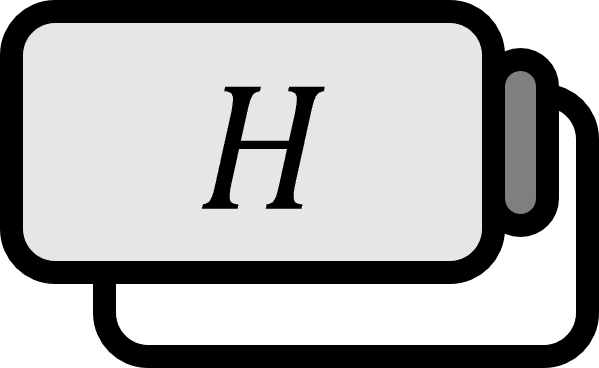Holder Continuous Function Spaces
Definitions1
Space of Continuous Functions
Let $\Omega \subset \mathbb{R}^{n}$ be called an open set. For a non-negative integer $m$, for all multi-indices $\alpha$ where $|\alpha| \le m$, the set of $\phi$ that are continuous in $\Omega$ for $D^{\alpha}\phi$ is called the space of continuous functions.
$$ C^{m}\left( \Omega \right) := \left\{ \phi : D^{\alpha} \phi \text{ is continuous on } \Omega, \forall \left| \alpha \right| \lt m \right\} $$
In particular, $C^0(\Omega):=C(\Omega)$, $C^{\infty}:=\cap_{m=0}^{\infty}C^m(\Omega)$ is defined. Also, here $D^{\alpha} \phi$ can also mean the weak derivative (distributional derivative) of $\phi$.
Space of Bounded Continuous Functions
For all $0 \le |\alpha| \le m$, the set of $\phi \in C^m(\Omega)$ that are bounded on $\Omega$ by $D^\alpha \phi$ is defined as the space of bounded, continuous functions.
$$ C^{m}_{B}\left( \Omega \right) := \left\{ \phi \in C^{m}(\Omega) : D^{\alpha} \phi \text{ is bounded on } \Omega, \forall \left| \alpha \right| \lt m \right\} $$
Then naturally, $C^{m}_{B}\left( \Omega \right) \subset C^{m}\left( \Omega \right)$ holds by definition. Furthermore, $C^m_{B}(\Omega)$ is a Banach space given with the following norm.
$$ \left\| \phi\ ;\ C^m_{B}( \Omega )\right\| := \max \limits_{0 \le \left| \alpha \right| \le m } \sup \limits_{x\ \in \Omega} | D^{\alpha}\phi (x) | $$
Space of Bounded, Uniformly Continuous Functions
For all $0 \le |\alpha| \le m$, the set of $\phi \in C^{m}(\Omega)$ that are bounded and uniformly continuous on $\Omega$ is called the space of bounded, uniformly continuous functions.
$$ C^{m}\left( \overline{\Omega} \right) := \left\{ \phi \in C^{m}(\Omega) : D^{\alpha} \phi \text{ is bounded and uniformly continuous on } \Omega, \forall \left| \alpha \right| \lt m \right\} $$
Then, $C^{m}\left( \overline{\Omega} \right)$ is a closed subspace of $C^{m}_{B}\left( \Omega \right)$, and is a Banach space given with the following norm.
$$ \left\| \phi\ ;\ C^m(\overline{\Omega} )\right\| := \max \limits_{0 \le |\alpha | m } \sup \limits_{x\ \in \Omega} | D^{\alpha}\phi (x) | $$
Space of Hölder Continuous Functions
Hölder Condition
Let’s say $0 \le \lambda \le 1$. For all $\left| \alpha \right| \le m$, $D^{\alpha} \phi$, if there exists a constant $K$ satisfying the equation below, then $D^{\alpha} \phi$ satisfies the Hölder condition on $\Omega$.
$$ \left| D^{\alpha} \phi (x) - D^{\alpha}\phi (y) \right| \le K |x-y|^\lambda,\quad \forall\ x,y \in \Omega $$
The set of $\phi$ among the elements of $C^{m}\left( \overline{\Omega} \right)$ that satisfy the Hölder condition is called the spaces of Hölder continuous functions.
$$ C^{m,\lambda}\left( \overline{\Omega} \right) := \left\{ \phi \in C^{m}\left( \overline{\Omega} \right) : D^{\alpha}\phi \text{ satisfies in } \Omega \text{ a Hoelder condition of exponent } \lambda, \forall \left| \alpha \right| \le m \right\} $$
Then, $C^{m,\lambda}\left( \overline{\Omega} \right)$ becomes a Banach space given with the following norm.
$$ \left\| \phi\ ;\ C^{m,\lambda} (\overline{\Omega} )\right\| := \left\| \phi\ ;\ C^{m} (\overline{\Omega} )\right\| + \max \limits_{0 \le |\alpha | m } \sup \limits_{\substack{x,y\ \in \Omega \\ x\ne y} } \dfrac{ | D^{\alpha}\phi (x) - D^{\alpha}\phi (y) |}{ |x-y| ^{\lambda}} $$
The following relationship holds for $0 \lt \nu \lt \lambda \le 1$.
$$ C^{m,\lambda}\left( \overline{\Omega} \right) \subsetneq C^{m,\nu}\left( \overline{\Omega} \right) \subsetneq C^{m}\left( \overline{\Omega} \right) $$
Explanation
The Lipschitz condition can be considered as the Hölder condition when $\lambda = 1$.
Robert A. Adams and John J. F. Foutnier, Sobolev Space (2nd Edition, 2003), p10-11 ↩︎
